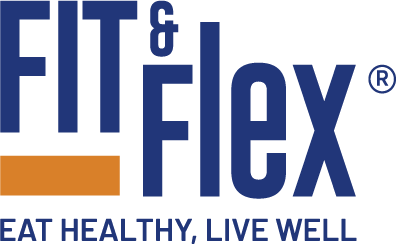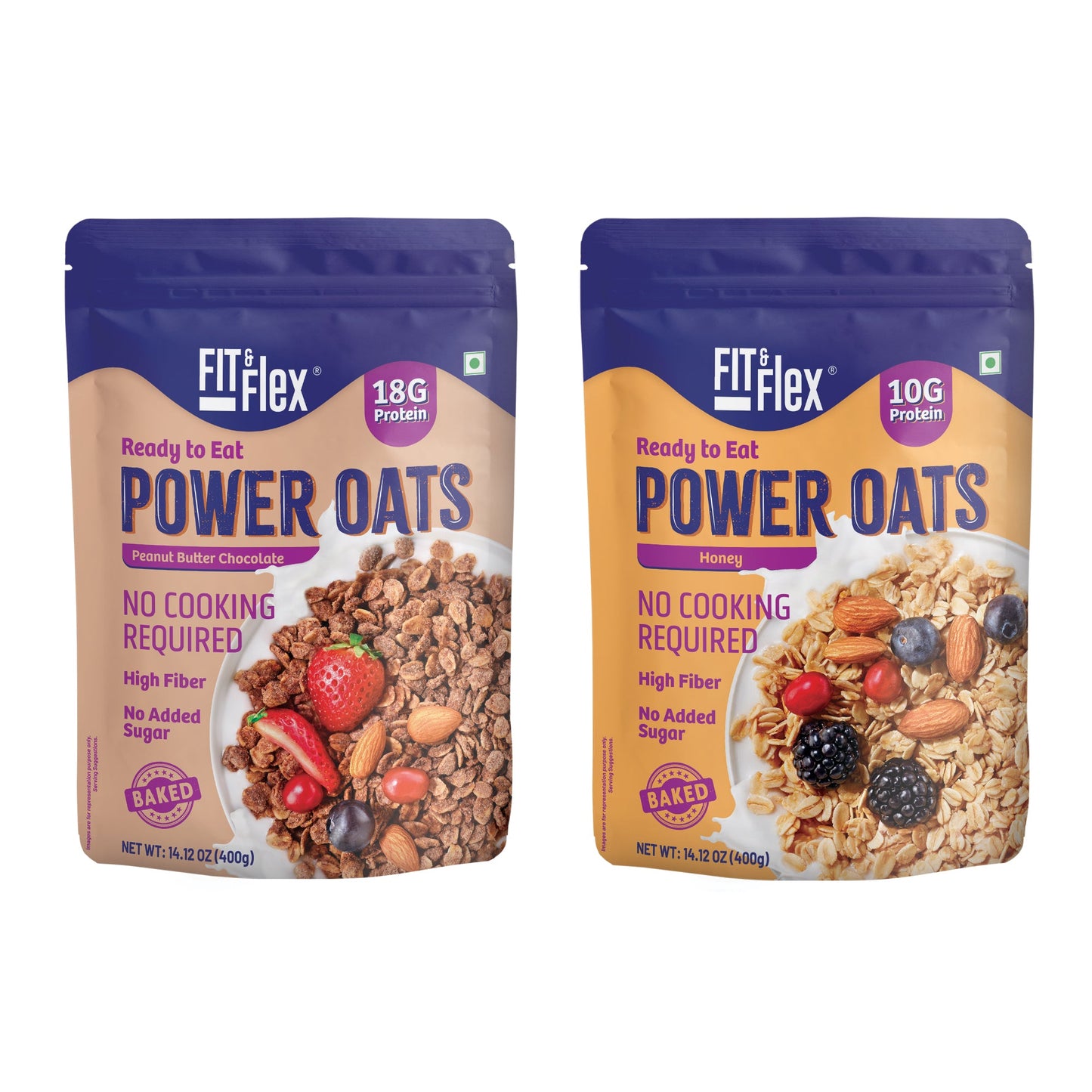Cereals List: Types Of Cereals And Their Benefits

What Are Cereals?
When you think about breakfast or a mid-afternoon healthy snack option, you usually turn to cereals. Because of their health benefits and how they keep you fuller for a longer time, different types of grains get considered one of the go-to options when trying to remain health-conscious.
Cereals are the edible seeds or grains of the Gramineae grass family. Cereals grown in various countries include rye, oats, barley, maize, triticale, millet, and sorghum. Many consider cereals as staple foods that are high in nutrients in both developed and developing countries. When it comes to the health benefits, cereals and cereal products are high in energy, carbohydrate, protein, and fiber, as well as a variety of micronutrients such as vitamin E, some B vitamins, magnesium, and zinc.
There is evidence that daily consumption of cereals, particularly wholegrain cereals, may play a role in preventing chronic diseases such as coronary heart disease, diabetes, and colorectal cancer. Because there may be several health benefits to eating wholegrain cereals, many health professionals encourage their consumption. Furthermore, a wider variety of wholegrain foods that are quick and easy to prepare encourages people to consume more of these foods.
In this article, you will learn about the various types of cereals and their health benefits so you can choose to consume those that are best suited for you and your health.
What Are The Different Types Of Cereal?
Cereal is essentially grass that has been cultivated and grown for the edible components of its grain. If eaten whole, they are a good source of vitamins, minerals, carbohydrates, fats, oils, and protein (in their natural form). When refined, they lose most of their beneficial components and get reduced to carbohydrates.
Wheat, barley, oat, rye, corn, rice, millet, and triticale are examples of grains. Wholemeal or wholegrain bread or crispbreads, dark, seedy pieces of bread, wholegrain breakfast cereals, wheat germ, brown rice, puffed whole grains, bulgur, quinoa, couscous, popcorn, and oatmeal are examples of whole grains.
Here’s a list of the different types of cereals and their health benefits.
1. Wheat
Wheat is the most widely grown cereal crop on the planet. It has become a popular grain due to the variety of culinary applications it offers. Wheat grain comes in several variations. Other wheat varieties besides bread wheat and durum include spelt, emmer, einkorn, and kamut.
Its nutritional and health benefits include the following:
- Low in fat, with the majority of it unsaturated.
- Potassium-rich and sodium-free.
- Thiamin, riboflavin, niacin, vitamin B6 (pyridoxine), folate, and pantothenic acid are all B-group vitamins.
- Iron, zinc, magnesium, phosphorus, and selenium are all present.
- High in carbohydrate (primarily starch) and insoluble dietary fiber.
2. Oats
Because oats’ bran and germ seldom get removed during processing, most food items containing the words ‘oats,’ ‘oat flour,’ or ‘oatmeal’ comprise whole grain oats. Oats are naturally high in beta-glucan, a soluble fiber found in the oat grain’s bran and endosperm layer.
The health benefits of oats include:
- Beta-glucan present in oats improves blood sugar control after meals.
- Oats also increase insulin responses.
- Oats help decrease cholesterol levels.
- Avenanthramides present in oats help protect blood vessels from the damaging effects of LDL cholesterol.
3. Barley
Barley is a cereal grain native to Asia that was one of the first grains to get widely cultivated. Due to its lower gluten content, barley only gets used in a limited number of bread recipes. As a result, fewer people in developed countries consume barley today. Despite this, the discovery that barley is high in beta-glucan has led to its use in health-promoting food products, particularly foods tailored to cardiovascular health.
Its health benefits include the following:
- It is rich in vitamins, minerals, and other beneficial plant compounds.
- It contains lignans, a group of antioxidants linked to a lower risk of cancer and heart disease.
- It can boost your intestinal health.
- Beta-glucans may help lower your cholesterol levels.
- It may help reduce your risk of type 2 diabetes by lowering blood sugar levels and improving insulin secretion.
4. Rye
Rye contains less gluten than wheat flour, making rye bread much denser. Traditional rye bread is made using a sourdough method and has a slightly sour taste. Rye is unique among grains in that it contains a high level of fiber in its endosperm and its bran. As a result, the glycemic index (GI) of rye products is generally lower than wheat and other grains.
The health benefits of rye include the following:
- It is rich in fiber, thus stimulating the bowel function and reducing the risk of constipation.
- It has a lower glycemic index and suitable for those with type 2 diabetes.
- It reduces the elevated levels of LDL cholesterol.
- It is rich in vitamins and minerals, especially in the B group.
- It reduces the risk of cardiovascular disease and the occurrence of gallstones.
- Source
5. Sorghum
Jowar, also known as sorghum in English, is widely regarded as the “new quinoa” due to its gluten-free, whole grain goodness. The ancient grain, a member of the millet family, is experiencing a revival as people move away from refined wheat products, which are not considered healthy. Because of its high nutrient content, jowar is a desirable grain for good health.
Here are some of the health benefits of jowar or sorghum:
- The 3-Deoxyanthoxyanins (3-DXA) present in jowar may inhibit cancer tumor growth.
- It can protect against the risk of diabetes and insulin resistance.
- It is safe for people with celiac disease.
- It can help manage cholesterol levels.
- The high levels of manganese in jowar help maintain calcium levels in your body as manganese increases calcium absorption.
6. Corn
Corn (also known as maize) is one of the most flavorful grains. It is the familiar yellow corn on the cob in its immature form. When it matures and dries out, it gets used in the same way that other grains are to make grain foods such as breakfast cereal. Corn is unusual in that it cannot reproduce without the assistance of humans. It is one of the most important crops globally because it gets widely used in food manufacturing.
Here are some of the health benefits of corn:
- The high fiber content in corn helps aid with digestion.
- Corn contains valuable B vitamins and other essential minerals, such as zinc, magnesium, copper, iron, and manganese, vital to your overall health.
- Corn is a good source of the antioxidants carotenoids, lutein, and zeaxanthin, which promote eye health.
- The insoluble fiber in corn may help lower colon cancer risk.
- The fiber present in corn may also help in weight management by increasing post-meal feelings of fullness.
7. Quinoa
Quinoa is one of the most popular health foods globally. Quinoa is gluten-free, high in protein, and one of the few plant foods that contain enough of each of the nine essential amino acids. It also comprises fiber, magnesium, B vitamins, iron, potassium, calcium, phosphorus, vitamin E, and other antioxidants.
Here are some of the health benefits of quinoa:
- Quinoa is high in flavonoids, including quercetin and kaempferol. These are powerful plant antioxidants with a plethora of health benefits.
- Quinoa contains soluble fiber, which can help reduce blood sugar levels, lower cholesterol, and help with weight loss.
- Quinoa is high in proteins and contains essential amino acids.
- Quinoa has a low glycemic index, which is excellent for blood sugar control.
- The high nutrient content in quinoa could also improve metabolic health.
8. Buckwheat
Buckwheat, a member of the Polygonaceae family, is a gluten-free pseudo-cereal. Buckwheat grain is a highly nutritious food that has a wide range of health benefits. In many countries, it is grown as grain in popular buckwheat. It contains specific high-level nutritionally beneficial components and, as a functional food, may have additional properties. Buckwheat does not contain gluten, so it is an excellent dietary alternative for people with celiac disease or gluten intolerance.
Here are some of the health benefits of buckwheat:
- Buckwheat is a good source of fiber and could have benefits for heart health.
- Being a good source of fiber and niacin, it helps improve digestive health.
- Buckwheat is high in protein, which helps in weight management because it leads to greater satiety.
- Buckwheat can help you manage your blood glucose levels.
- Buckwheat is a perfect addition to a gluten-free diet for those with celiac disease and the alleviation of other common ailments.
9. Millet
Millets are small, round-shaped coarse grains that are native to India and have an impressive nutrient profile. It is a drought and pest-resistant crop that can thrive in harsh climates and poor soil. All millet varieties are members of the Poaceae family, but they differ in color, appearance, and species. Millets come in several variations, including ragi, foxtail millet, pearl millet finger millets, proso millets, little millets, Kodo millets, and barnyard millets. All of these grains have one thing in common: they are high in nutrition.
Here are some of the health benefits of millets:
- Millets are high in nutrients, gluten-free, and have a low glycemic index which helps in stabilizing the blood sugar levels.
- Millets improve gut health and help you in achieving sustained weight loss.
- Millets contain beta-glucans, flavonoids, anthocyanidins which lower the risk of heart disease and stroke.
- According to research, millets are effective in inhibiting the growth of cancerous cells in various tissues.
- Good dietary fiber in millets helps maintain digestive health and promotes the overall health of other vital organs.
10. Triticale
Triticale is a cross between wheat and rye. It is thought to contain the best of both grains and is gaining popularity due to its higher protein content than wheat. Triticale is similar to wheat grain in size, shape, and color, but the grain produced by triticale is longer and slightly darker in color than wheat and plumper than rye. You can find triticale in a variety of healthy cereals and many other forms. You can find its presence in whole triticale berries, flour, cereal, bread, flakes, or crackers.
Here are some of the health benefits of Triticle:
- The high fiber content of triticale keeps the blood sugar levels balanced.
- Triticale helps maintain digestive health and increases the efficiency of nutrition absorption.
- The essential vitamins and minerals present in triticale help boost blood circulation and improve metabolic efficiency.
- Triticale contains manganese, folic acid, and other nutritional elements essential for cell production.
- Triticale can significantly boost bone growth and speed up bone healing.
These different types of cereal will boost your overall health and maintain the nutritional intake your body needs for it to function well. Depending on your body, you can choose to include any of these grains in your daily diet or opt for breakfast cereals that contain these grains.
Types Of Healthy Breakfast Cereals
A popular breakfast item, you will come across several varieties of cereals. It is simple and convenient for those who lead hectic lives. Furthermore, you can consume it in varying amounts because it contains high fiber and protein, necessary to promoting fullness. The good news is that there are several nutritious kinds of cereal available. They include do-it-yourself varieties and brands like the Fit & Flex granola.
Here you can take a look at the different breakfast cereal options that are healthy and nutritious.
1. Oats
Oat is a healthy cereal option. Oats are typically rolled or crushed before being consumed as oatmeal or porridge. Because oats are whole grains, they are high in fiber and essential nutrients. Oatmeal is versatile, and you can prepare it in a variety of ways.
You can either boil it with water or milk before being topped with fresh fruit, cinnamon, or nuts. You can also make “overnight” oats. You can soak them in milk or yogurt for several hours and are ready to eat for breakfast.
2. Muesli
Muesli is a type of cereal that is both healthy and delicious. It gets typically made with rolled oats, nuts, seeds, and dried fruit. Muesli is similar to granola in that it is consumed raw or without being baked. Furthermore, it does not typically contain any added oils or sweeteners.
Muesli is an excellent source of protein due to its combination of whole grains, nuts, and seeds. It also includes a high amount of fiber, vitamins, and minerals. You can significantly reduce the carb content of muesli by making a grain-free version with coconut flakes, nuts, and raisins.
3. Grape Nuts
Grape Nuts are among the healthiest cereals available. They have no added sugar and are made with only four ingredients: whole-grain wheat flour, malted barley flour, salt, and dried yeast. They also contain many essential nutrients, such as iron, B vitamins, zinc, magnesium, and copper.
4. Organic Superfood Cereals
Superfood Cereals stand packed with nutritious ingredients. Chia seeds, buckwheat seeds, and hemp seeds are all high in protein and fiber. Furthermore, chia seeds are high in omega-3 fatty acids, which may aid in the reduction of inflammation and the promotion of brain health.
5. Peanut Butter Puff Cereal
Peanut butter puffs made from scratch are a healthier alternative to store-bought varieties. You can make them by combining almond flour, peanut butter, cocoa powder, coconut oil, and a few other ingredients into a dough, rolling it into small balls, and baking it in the oven.
6. Flax-Chia Cereal
Flax and chia seeds are high in omega-3 fatty acids and protein, which will keep you full and satisfied. They also provide a significant amount of nutrients, such as magnesium, phosphorus, and manganese. You can also make your nutritious cereal with flax and chia seeds. All you have to do is make a dough out of flax meal, chia seeds, and coconut oil, as well as cinnamon and, if desired, a sweetener such as a stevia. After that, the dough is cut into squares and baked.
7. Granola
When it comes to store-bought granola, many of you may have apprehensions regarding its nutritional value. However, when you buy Fit & Flex granola, not only does it provide maximum health benefits, it also comes in several flavors and adds that healthy twist to your breakfast or snacks.
Summary
If you want to opt for healthy breakfast and snack options, today you will find plenty of options – cereals being among the most consumed health foods. With the variety and the numerous health benefits, many cereal varieties rank among some of the most preferred healthy food options globally. Therefore, to make the most out of your daily diet, you can include cereal options like oats or granola in your breakfast or snack menu.
If you are pressed for time and wish for a more tempting and healthy breakfast or snack option, you can also try Fit & Flex granola which comes in several flavors. It is healthy and contains the right crunch you need to kick-start your day. Made of the finest ingredients and entirely baked, you can snack on them any time of the day or night. Begin your journey towards a healthier lifestyle with Fit & Flex Granola today!




